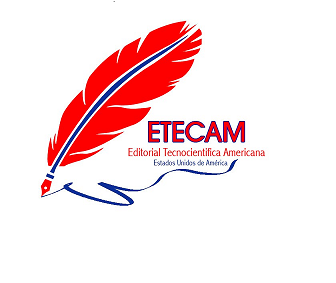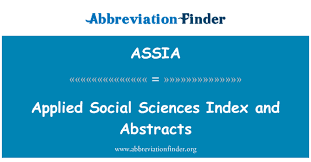Evidence for physical therapy in the treatment of benign paroxysmal positional vertigo
DOI:
https://doi.org/10.51736/sa.v7iEspecial%203.274Keywords:
benign paroxysmal positional vertigo, posterior canal, canalith repositioning, treatment, management.Abstract
Benign paroxysmal positional vertigo (BPPV) is one of the most common causes of peripheral vertigo, characterized by brief but intense episodes of dizziness triggered by changes in position. Although its exact etiology is not yet fully understood, displaced otoliths have been identified as triggering the characteristic symptoms. In recent years, physiotherapy has emerged as an effective intervention in the management of BPPV, especially regarding canalith repositioning maneuvers. This literature review article examines the current evidence on the efficacy of physiotherapy in the treatment of posterior canal BPPV, exploring its impact on symptom resolution, recurrence prevention, and improvement of patients' quality of life. To determine the evidence of physiotherapy in the treatment of benign paroxysmal positional vertigo (BPPV) of the posterior canal. A systematic review was conducted following the guidelines of the PRISMA method in the PubMed, Google Scholar, Science Direct, and SpringerLink databases, including a total of 10 randomized clinical trials. Numerous studies have demonstrated that canalith repositioning maneuvers, such as the Epley maneuver and the Semont maneuver, are highly effective in displacing otoliths and alleviating symptoms of positional vertigo. Additionally, vestibular physiotherapy, which includes habituation exercises and balance training, was found to improve postural stability and reduce the frequency of recurrences in patients with BPPV. The evidence also suggests that physiotherapy may have significant benefits in terms of improving quality of life and functionality in these patients.
Downloads
References
Badawy, W. M. A., El-Mawla, E. K. G., Chedid, A. E. F., & Mustafa, A. H. A. (2015). Effect of a hybrid maneuver in treating posterior canal benign paroxysmal positional vertigo. Journal of the American Academy of Audiology, 26(2), 138–144. https://doi.org/10.3766/jaaa.26.2.4
Balikci, H. H., & Ozbay, I. (2014). Effects of postural restriction after modified Epley maneuver on recurrence of benign paroxysmal positional vertigo. Auris Nasus Larynx, 41(5), 428–431. https://doi.org/10.1016/J.ANL.2014.05.007
Ballve, J. L., Carrillo, R., Villar, I., Rando, Y., Arias, O. L., Vasudeva, A., Bigas, O., Almeda, J., Capella, A., Buitrago, C. J., Monteverde, X., Rodero, E., Rubio, C., Sepulveda, P. C., Moreno, N., Hernández, A. M., Martin, C., & Azagra, R. (2014). Effectiveness of the Epley’s maneuver performed in primary care to treat posterior canal benign paroxysmal positional vertigo: study protocol for a randomized controlled trial. Trials, 15(1), 179. https://doi.org/10.1186/1745-6215-15-179
Carnevale, C., Muñoz-Proto, F., Rama-López, J., Ferrán-de la Cierva, L., Rodríguez-Villalba, R., Sarría-Echegaray, P., Mas-Mercant, S., & Tomás-Barberán, M. (2014). Manejo del vértigo posicional paroxístico benigno en atención primaria. SEMERGEN - Medicina de Familia, 40(5), 254–260. https://doi.org/https://doi.org/10.1016/j.semerg.2014.01.001
Çetin, Y. S., Çağaç, A., Düzenli, U., Bozan, N., & Elasan, S. (2021). Residual Dizziness in Elderly Patients after Benign Paroxysmal Positional Vertigo. ORL, 84(2), 122–129. https://doi.org/10.1159/000516961
Chu, C.-H., Liu, C.-J., Lin, L.-Y., Chen, T.-J., & Wang, S.-J. (2015). Migraine is associated with an increased risk for benign paroxysmal positional vertigo: a nationwide population-based study. The Journal of Headache and Pain, 16(1), 62. https://doi.org/10.1186/s10194-015-0547-z
Isaradisaikul, S. K., Chowsilpa, S., Hanprasertpong, C., & Rithirangsriroj, T. (2021). Single Cycle Versus Multiple Cycles of Canalith Repositioning Procedure for Treatment of Posterior Canal Benign Paroxysmal Positional Vertigo: A Randomized Controlled Trial. Otology & Neurotology, 42(1). https://journals.lww.com/otology-neurotology/fulltext/2021/01000/single_cycle_versus_multiple_cycles_of_canalith.27.aspx
Jacobson, G. P., & Newman, C. W. (1990). The Development of the Dizziness Handicap Inventory. Archives of Otolaryngology–Head & Neck Surgery, 116(4), 424–427. https://doi.org/10.1001/archotol.1990.01870040046011
Kjærsgaard, J., Petersen, N., & Hougaard, D. (2023). Adding Kinetic Energy Does Not Further Improve Treatment Outcomes With a Mechanical Reposition Chair: A Randomized Controlled Trial. Otology & Neurotology: Official Publication of the American Otological Society, American Neurotology Society [and] European Academy of Otology and Neurotology, 44, e33–e41. https://doi.org/10.1097/MAO.0000000000003757
Li, J., Tian, S., & Zou, S. (2017). Efficacy of the Li maneuver in treating posterior canal benign paroxysmal positional vertigo. Acta Oto-Laryngologica, 137(6), 588–592. https://doi.org/10.1080/00016489.2016.1258731
Luis-Vázquez, S., & Rodríguez-Fuentes, G. (2017). Vértigo posicional paroxístico benigno y su tratamiento con maniobras de reposicionamiento: revisión sistemática. Rehabilitación, 51(2), 95–108. https://doi.org/https://doi.org/10.1016/j.rh.2016.10.009
Meghji, S., Murphy, D., Nunney, I., & Phillips, J. S. (2017). The Seasonal Variation of Benign Paroxysmal Positional Vertigo. Otology & Neurotology, 38(9). https://journals.lww.com/otology-neurotology/fulltext/2017/10000/the_seasonal_variation_of_benign_paroxysmal.23.aspx
Patiño, V. P., Guerrero, E. P., Vargas, G. J., & Chavarría, X. J. (2024). Audiología: vértigo posicional paroxístico benigno, rehabilitación vestibular factores asociados psicológicos y tinnitus. RECIAMUC, 8(1), 423–431. https://doi.org/10.26820/reciamuc/8.(1).ene.2024.423-431
Se To, P. L., Singh, D. K. A., & Whitney, S. L. (2022). Effects of customized vestibular rehabilitation plus canalith repositioning maneuver on gait and balance in adults with Benign Paroxysmal Positional Vertigo: A Randomized Controlled Trial. Journal of Vestibular Research, 32, 79–86. https://doi.org/10.3233/VES-190731
Sinsamutpadung, C., & Kulthaveesup, A. (2021). Comparison of outcomes of the Epley and Semont maneuvers in posterior canal BPPV: A randomized controlled trial. Laryngoscope Investigative Otolaryngology, 6(4), 866–871. https://doi.org/https://doi.org/10.1002/lio2.619
Tian, L., Sheng, H.-B., Wang, J., Luo, X., Yu, J., Jia, X.-H., Cheng, X., Han, Z., & Chi, F.-L. (2015). Comparative Study on the Roles of the Number of Accelerations and Rotation Angle in the Treatment Maneuvers for Posterior Semicircular Canal Benign Paroxysmal Positional Vertigo. ORL, 78(1), 36–45. https://doi.org/10.1159/000442091
Zou, S., Li, J., Tian, S., Ju, J., & Jia, M. (2017). A randomized controlled trial on short-term efficacy of the modified Semont maneuver for the treatment of posterior canal benign paroxysmal positional vertigo. Lin Chuang Er Bi Yan Hou Ke Za Zhi = Journal of Clinical Otorhinolaryngology, 31, 1468–1472. https://doi.org/10.13201/j.issn.1001-1781.2017.19.002
Published
How to Cite
Issue
Section
License
Copyright (c) 2024 Michael Xavier Gavilanes Cárdenas, Ángela Priscila Campos Moposita

This work is licensed under a Creative Commons Attribution-NonCommercial-ShareAlike 3.0 Unported License.






















































